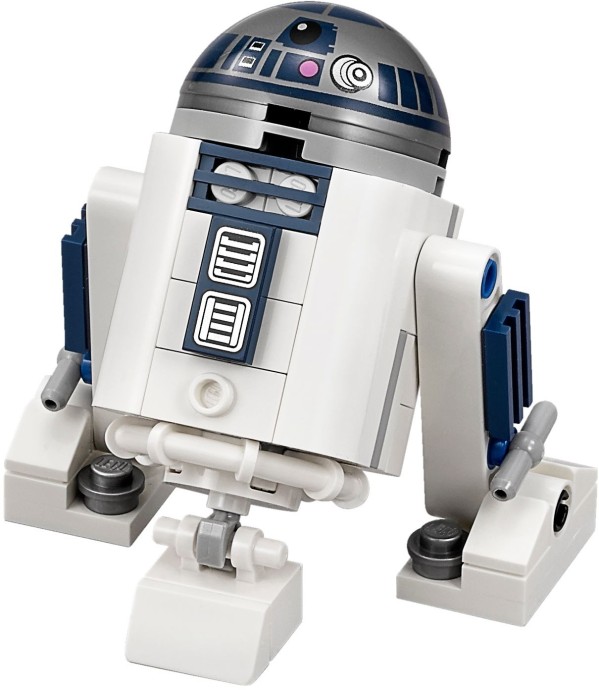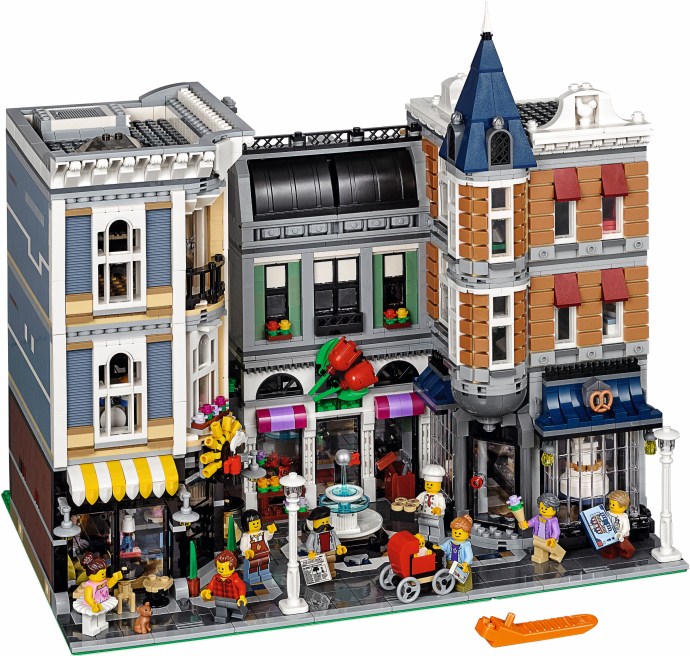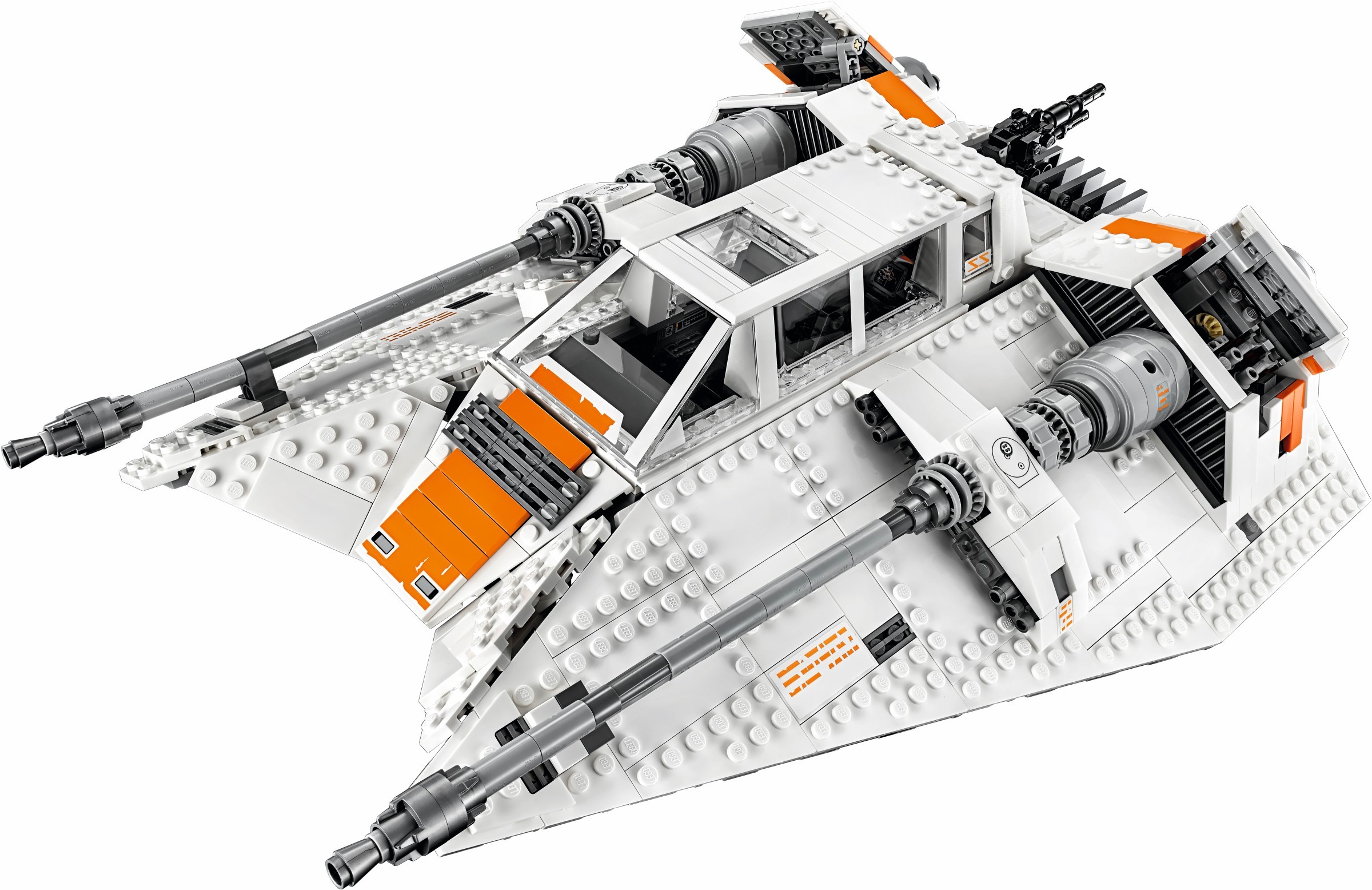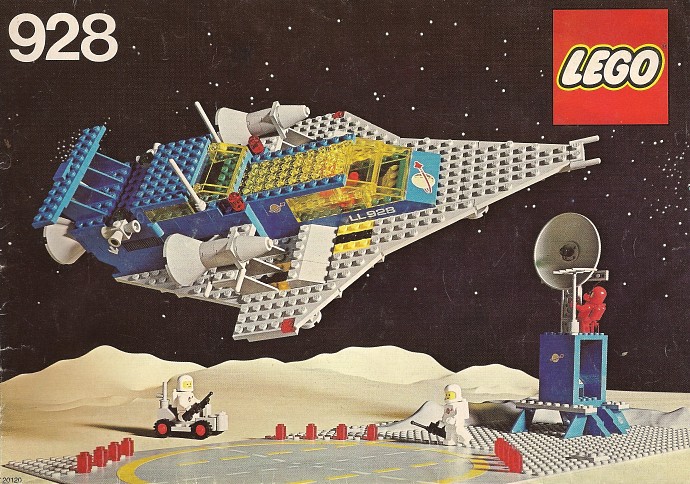I always enjoy building and writing about vintage space sets, and judging by the number of views that my Space Police post got last time out plus the comments on the Gimme Lego Facebook page it seems that I'm not the only one who enjoys wallowing in LEGO Space nostalgia. I've therefore decided to focus on another long-retired LEGO space set today, this time from the M-Tron subtheme.
The M-Tron subtheme of LEGO space consists of a total of eight sets released in 1990 and 1991. In addition to these eight sets, LEGO released instructions for an additional M-Tron model - 6862 Secret Space Voyager- which could be built by combining parts from three of the retail M-Tron sets. All of the M-Tron sets featured a vehicle of some description, and the majority of the sets utilized magnets, a first for LEGO Space I believe. In this review I'll be focusing on 6896 Celestial Forager, a mid-size M-Tron set released in 1990.
Unlike 6897 Rebel Hunter which I reviewed a few weeks back 6896 Celestial Forager is too small to merit a cardboard tray inside the box. As was the case for 6897 a laser grid forms the backdrop to an image of the completed build on the front of the box (above) although this time the grid is purple rather than green. Again similar to 6897 the vehicle is traversing a sandy planet surface, albeit at ground level this time. A price tag from departed UK retailer Woolworths is stuck over the LEGO logo on both the front and back of the box and indicates that the set retailed for £10.49 back in 1990. The back of the box (below) is split into a number of panels featuring alternate builds, and the inclusion of magnets is also highlighted.
The instruction booklet is in fact a thrice-folded A3-sized sheet which is printed on both sides. Although the cover panel (below) predictably shows an image of the completed build, here the vehicle is photographed from behind in contrast to the side-on view to be found on the front of the box. The instructions break the build into 14 principal steps, not including assembly of the minifigure.
The set contains a single minifigure, named by Bricklink as M-Tron with Airtanks. This minifigure has appeared in a total of ten sets, unsurprisingly all from the M-Tron subtheme given the prominent M-Tron logo printed in the middle of the red torso.... In addition to gracing this minifigure, the torso can also be found as a part of two other minifigures. All other components of the minifigure, namely the white legs with black hips, the yellow head printed with a standard grin pattern, the black helmet and airtanks, and the trans-neon green visor, have been widely distributed in many sets.
Below you can see the minifigure from the rear with the helmet removed. There's no printing on the back of the head or the torso.
With the set's single minifigure assembled it's time to build the vehicle. The Celestial Forager consists of front and rear sections joined to each other by a pair of black 2 x 4 hinge plates with male and female articulated joints. There's also an upper bridge joining the front and rear sections, on top of which is a black inverted webbed 6 x 6 dish. The upper bridge features a faintly Heath Robinson-esque mechanism utilising a pair of 2 x 2 turntable plates together with a 1 x 2 Technic brick, a modified 2 x 2 plate with pinholes and 4L Technic axle to ensure that the two sections of the vehicle can still articulate at the hinge with the bridge in place. The front section of the vehicle includes a cockpit which incorporates a red cockpit space nose with printed M-Tron logo; this element has only appeared in a total of three sets including this one. A pair of chainsaw bodies are attached to the nose at an angle, one on either side; each sports a different 1 x 1 tile printed with a button design and a computer display design respectively. Both tiles have appeared in fewer than 10 sets in total. The vehicle's four black hard plastic 35mm x 31mm wheels attach to the chassis via red modified 2 x 2 bricks with pin.
The rear section of the vehicle is basically a trailer upon which a crane is constructed. A pair of black cylindrical magnets anchor the crane at its base. One of my most memorable brushes with LEGO cylindrical magnets was when I built 10030 Imperial Star Destroyer, and since then whenever I encounter them I recall that epic build. One of the magnets clicks into a 2 x 2 magnet holder which comes in a number of varieties; the 'short arm' variety found within this set can only be found in one other set, and the other varieties are only marginally more common. The crane's boom is formed from a 2 x 4 x 5 inclined support stanchion. A further cylindrical magnet is attached at the top of the boom, this time via a red 2 x 3 magnet holder. Cargo is provided in the form of a red 2 x 2 x 2 container; the variant supplied in this set has solid studs and has only ever appeared in five sets in this colour. The container has a printed light grey door which can only be found in seven sets, and inside the container are a pair of trans-neon green 1 x 1 round plates.
The main play feature of the set is the crane. As shown in the picture below, the boom can be lowered by disengaging the pair of magnets at the base of the crane, and the cargo container can be detached by disengaging the magnets at the end of the boom. As previously mentioned, the vehicle can bend in the middle thanks to the inclusion of a hinge.
Although I'd have to say that 6896 Celestial Forager falls some way short of being a "must-have" set, it's nevertheless an interesting step along the road from the earliest LEGO Space sets to present day offerings and it's well worth the £10 plus shipping that I paid for my boxed, complete copy a few years back. While that's admittedly inexpensive by current standards, the set can still be acquired for a relatively modest sum now - at time of writing complete boxed examples are available on Bricklink for as little as £15 plus shipping, which is less than what the set, originally priced at £10.49 back in 1990, would cost now if adjusted for inflation.
The M-Tron subtheme of LEGO space consists of a total of eight sets released in 1990 and 1991. In addition to these eight sets, LEGO released instructions for an additional M-Tron model - 6862 Secret Space Voyager- which could be built by combining parts from three of the retail M-Tron sets. All of the M-Tron sets featured a vehicle of some description, and the majority of the sets utilized magnets, a first for LEGO Space I believe. In this review I'll be focusing on 6896 Celestial Forager, a mid-size M-Tron set released in 1990.
Unlike 6897 Rebel Hunter which I reviewed a few weeks back 6896 Celestial Forager is too small to merit a cardboard tray inside the box. As was the case for 6897 a laser grid forms the backdrop to an image of the completed build on the front of the box (above) although this time the grid is purple rather than green. Again similar to 6897 the vehicle is traversing a sandy planet surface, albeit at ground level this time. A price tag from departed UK retailer Woolworths is stuck over the LEGO logo on both the front and back of the box and indicates that the set retailed for £10.49 back in 1990. The back of the box (below) is split into a number of panels featuring alternate builds, and the inclusion of magnets is also highlighted.
The instruction booklet is in fact a thrice-folded A3-sized sheet which is printed on both sides. Although the cover panel (below) predictably shows an image of the completed build, here the vehicle is photographed from behind in contrast to the side-on view to be found on the front of the box. The instructions break the build into 14 principal steps, not including assembly of the minifigure.
Below you can see the minifigure from the rear with the helmet removed. There's no printing on the back of the head or the torso.
With the set's single minifigure assembled it's time to build the vehicle. The Celestial Forager consists of front and rear sections joined to each other by a pair of black 2 x 4 hinge plates with male and female articulated joints. There's also an upper bridge joining the front and rear sections, on top of which is a black inverted webbed 6 x 6 dish. The upper bridge features a faintly Heath Robinson-esque mechanism utilising a pair of 2 x 2 turntable plates together with a 1 x 2 Technic brick, a modified 2 x 2 plate with pinholes and 4L Technic axle to ensure that the two sections of the vehicle can still articulate at the hinge with the bridge in place. The front section of the vehicle includes a cockpit which incorporates a red cockpit space nose with printed M-Tron logo; this element has only appeared in a total of three sets including this one. A pair of chainsaw bodies are attached to the nose at an angle, one on either side; each sports a different 1 x 1 tile printed with a button design and a computer display design respectively. Both tiles have appeared in fewer than 10 sets in total. The vehicle's four black hard plastic 35mm x 31mm wheels attach to the chassis via red modified 2 x 2 bricks with pin.
The rear section of the vehicle is basically a trailer upon which a crane is constructed. A pair of black cylindrical magnets anchor the crane at its base. One of my most memorable brushes with LEGO cylindrical magnets was when I built 10030 Imperial Star Destroyer, and since then whenever I encounter them I recall that epic build. One of the magnets clicks into a 2 x 2 magnet holder which comes in a number of varieties; the 'short arm' variety found within this set can only be found in one other set, and the other varieties are only marginally more common. The crane's boom is formed from a 2 x 4 x 5 inclined support stanchion. A further cylindrical magnet is attached at the top of the boom, this time via a red 2 x 3 magnet holder. Cargo is provided in the form of a red 2 x 2 x 2 container; the variant supplied in this set has solid studs and has only ever appeared in five sets in this colour. The container has a printed light grey door which can only be found in seven sets, and inside the container are a pair of trans-neon green 1 x 1 round plates.
The main play feature of the set is the crane. As shown in the picture below, the boom can be lowered by disengaging the pair of magnets at the base of the crane, and the cargo container can be detached by disengaging the magnets at the end of the boom. As previously mentioned, the vehicle can bend in the middle thanks to the inclusion of a hinge.
Although I'd have to say that 6896 Celestial Forager falls some way short of being a "must-have" set, it's nevertheless an interesting step along the road from the earliest LEGO Space sets to present day offerings and it's well worth the £10 plus shipping that I paid for my boxed, complete copy a few years back. While that's admittedly inexpensive by current standards, the set can still be acquired for a relatively modest sum now - at time of writing complete boxed examples are available on Bricklink for as little as £15 plus shipping, which is less than what the set, originally priced at £10.49 back in 1990, would cost now if adjusted for inflation.














































































































































































